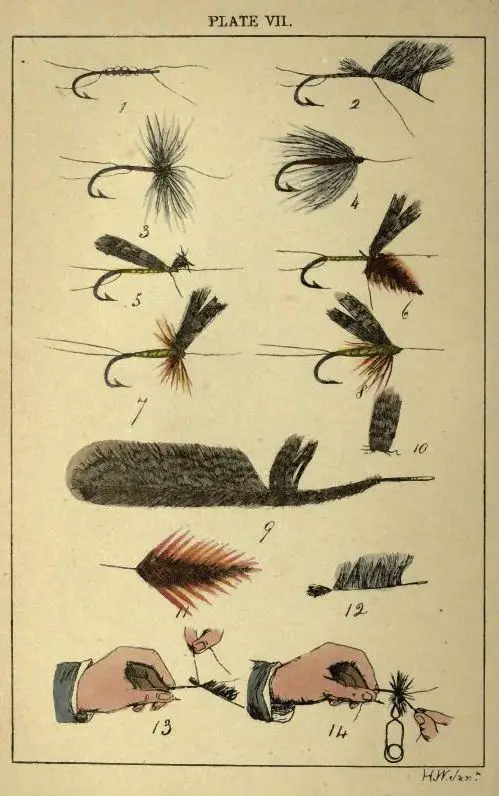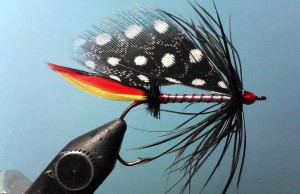This post was last updated on December 29th, 2015 at 12:50 am

Fly Tying’s History
Most historians believe that Chinese fishermen were the first to utilize artificial flies, with a mind to catching more fish! The first known design featured the feather of a kingfisher, which functioned as hook-style bait. This fly dates back to several thousand years before Christ.
In terms of the evolution of fly tying, the Macedonians improved on the more basic Chinese design, by using feathers in order to create the look of winged insects. These Macedonians flies were more complex in design and they were produced much later, around 200 AD.

In the 13th century, a fishing expert known as Dame Juliana Berner published an article which showed specific fly ties for every month of the year. These flies were all different in terms of resembling specific insects. During this point in time, hooks were crafted from iron. However, their dependability was not good and it took until the 17th century (and the advent of smithing) to produce hooks with more hardness and ruggedness.
The Industrial Revolution made such hooks more affordable for anglers to buy, due to mass production.

Until the end of the 19th century, every fly was hand-tied utilizing natural fibers, such as silk threads and wool threads. These flies were dubbed via animal products and hackled with game birds. At this stage, rough, primitive versions of vises were invented and these assisted the tier to a great extent. Dry flies were also developed during this period and they became a favorite of fishermen who fished in British chalk streams.
The increased popularity of salmon fishing assisted with fly tying’s progress, as did mass production. At this point, tiers began to expand their stores of materials and new material choices included the wool of pigs, the fur of seals and wings crafted from hair. The American Catskills were a hotbed for production of these materials.
By the 20th century, man-made materials were prevalent and they were utilized as tools for fly tying. In addition, nymphs also became popular.
Learn About the First Trout Flies

The Catskills has a long history in terms of its contributions to United States fly-fishing. Its mountain region was filled with trout and this inspired the creation of a dry fly of the Catskill style. Men who created these Appalachian fly ties were seasoned anglers and some notable names include Edward R. Hewitt and Theodore Gordon. Popular fly ties of the day include Pink Ladies and Quill Gordons. These resourceful anglers pushed forward the design and production of trout flies. However, the Japanese were also skilled in this respect.
Centuries ago, trout flies were made in-hand and fly tying vises were not used. They were fashioned on snelled hooks which were crafted from horse hair.
It’s believed that the first trout flies were invented and used by the Japanese about two hundred years ago. Tenkara-style fishing was popular in the mountain ranges of Japan as it allowed those who fished for a living to catch local species.
Today’s Fly Ties are High-tech
Now that we’ve explored the rich history of tying flies, let’s talk about how they are made nowadays. First off, there are more styles of fly ties than ever before. In fact, it’s safe to say that there is a fly tie for almost any fish out there that you want to catch. Flies may still feature feathers, whether real or faux and they also feature ultra-modern tying materials, such as clear straps. Examples of feathers which are used today include Golden Rooster Red Tip Tails and Guinea Body Feathers.
Most people don’t tie flies for themselves, unless they enjoy the artistry and painstaking attention to detail which is required. Since an array of trusted manufacturers offer these designs, at a variety of price points, it’s pretty easy to find high-quality designs almost anywhere.
Now that you know more about the history of fly-tying, you’ve gained a deeper understanding of how this art evolved through the centuries. To find out more, visit a local library and look for books on fly fishing. Another option is to find instructions for making old-school flies online. Lots of artisans replicate the styles of yesteryear and you may try this, too.
See Also: The History of Fly Fishing
